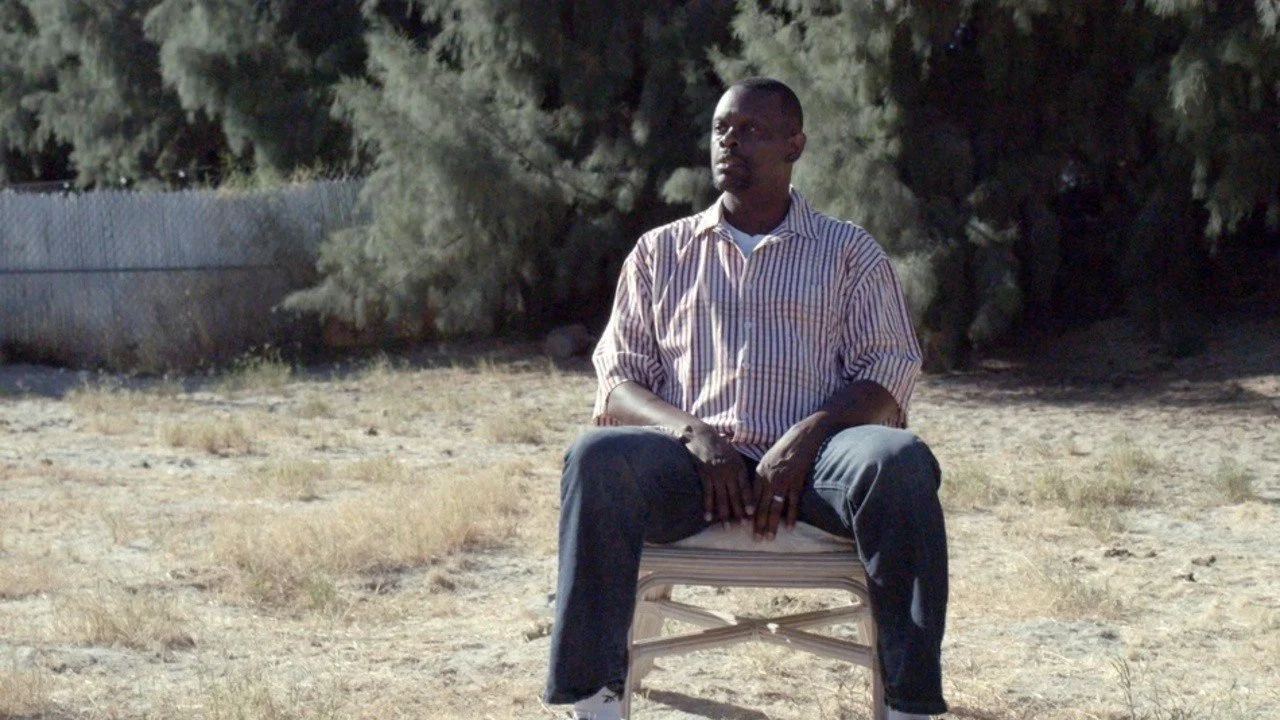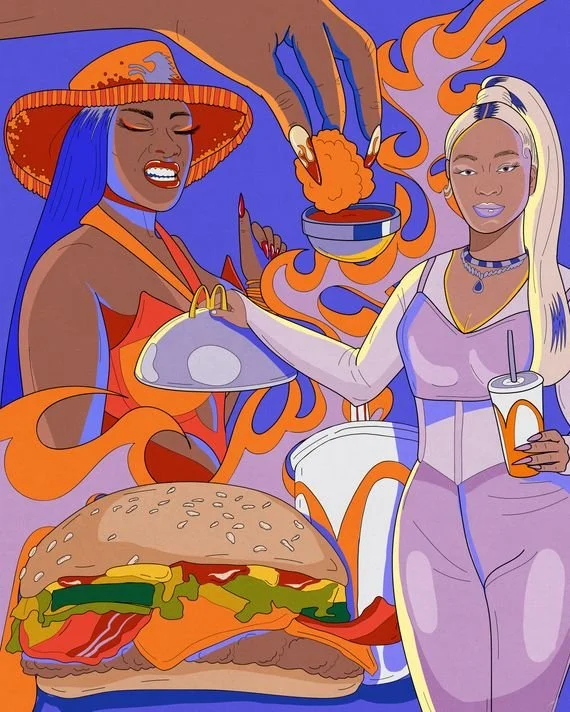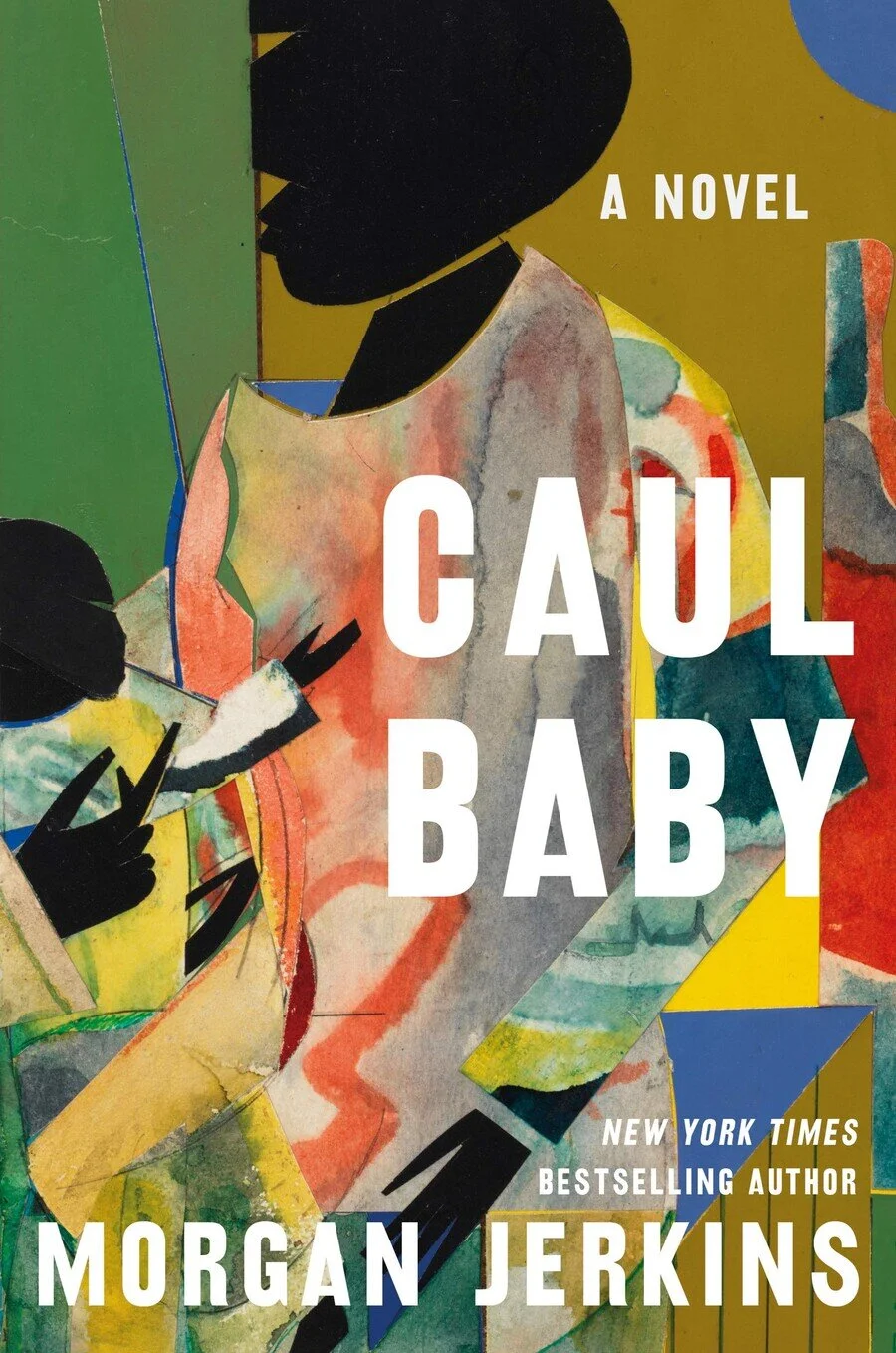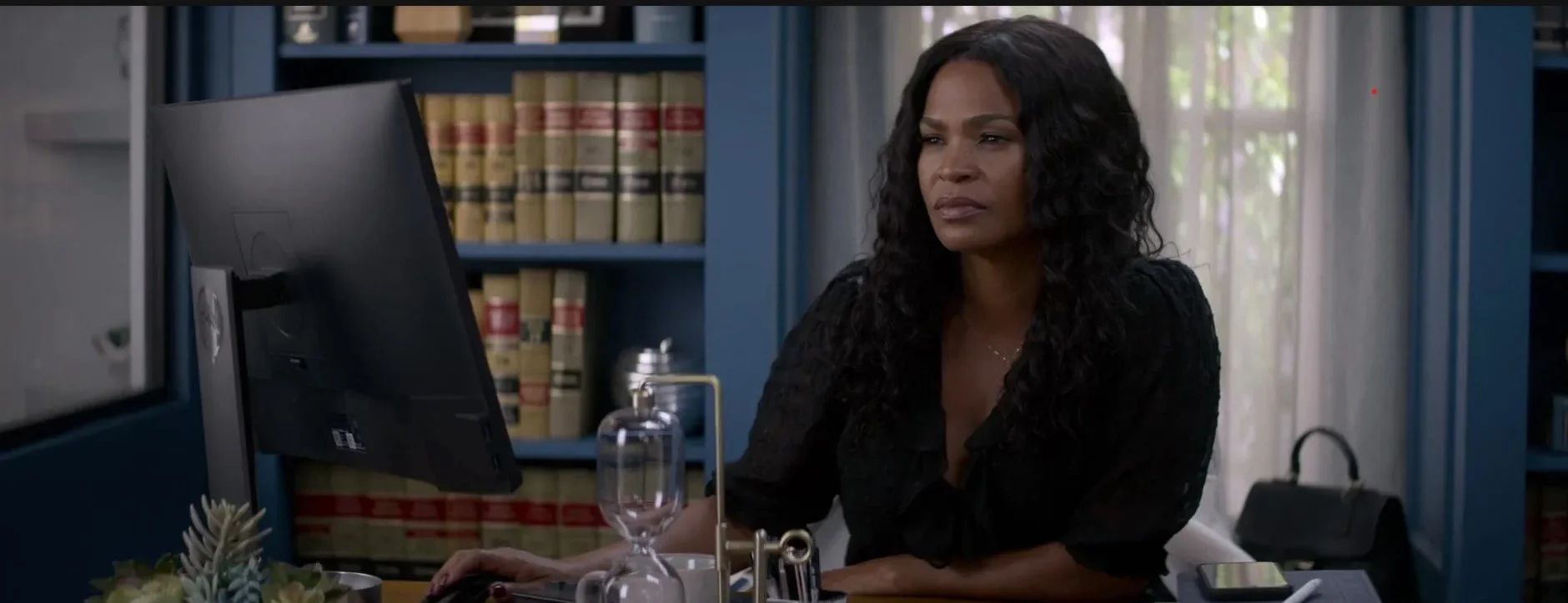You couldn’t breathe until the trees were gone (Africa is a Country)
Since Black American jazz singer Billie Holiday sang of “strange fruit hanging from the poplar trees” in her 1939 anti-lynching ballad, the popular representation of American trees has been haunted by the nation’s history of enlisting nature in terror. “I wonder if every white man in this country, when he plants a tree, doesn’t see negroes hanging from its branches,” French dramatist Jean Genet pondered in the introduction to the 1970 printing of Soledad Brother: The Prison Letters of George Jackson—an epistolary biography that recounts Jackson’s life and politics as a Black American activist and prisoner in California’s San Quentin State Prison prior to his attempted prison escape and subsequent murder. In Toni Morrison’s 1987 Pulitzer Prize-winning novel Beloved, a fugitive slave woman named Sethe has whipping lashes on her back that have healed into the shape of a chokecherry tree. “I got a tree on my back and a haint in my house, and nothing in between but the daughter I am holding in my arms. No more running—from nothing, I will never run from another thing on this earth,” Sethe asserts. And decades later, Percival Everett’s 2021 The Trees, a work of crime fiction set in a small town in Mississippi, follows a series of murders that share an uncanny link to the 1955 murder of Emmett Till, the 14-year-old lynching victim whose brutal murder in the very same state continues to rupture the very metaphysics of time and space, life, and death.
With the release of Racist Trees (2022), documentarians Sara Newens and Mina T. Son join in this artistic and intellectual tradition of arboreal inquiry in their film’s exploration of Crossley Tract, a historically Black community in Palm Springs where residents organized for the removal of tamarisks trees that have separated their under-resourced and state-neglected neighborhood from the luxury views of the Tahquitz Golf Course.
Read More
Depreciating Assets: Who Wins By Declaring The End of The BBL Era? (Lux Magazine)
The era of the ass is on its way out, or so we have been told. Over a decade after BBC News announced in 2011 that a growing “obsession” with big booties had sprung from the increased popularity of American hip-hop culture, and the corresponding prominence of well-endowed artists such as Beyoncé and Nicki Minaj, social media, journalists, critics, and more have begun to join the bandwagon by openly wishing that the wagon would go away. “The bbl era is over,” Twitter users have declared for months, referring to the cosmetic surgery known as the Brazilian Butt Lift, or BBL. They retweet and thread together images of celebrities whose alleged and confirmed BBL reversals have been regarded as the death knell for the donk in American popular culture. Many have noted, before its contemporary death sentence discourse, that the “global pursuit” of ass-enhancement and edification has had unique impacts on pronunciations of Black women’s “realness,” the theorization of a “new black body,” the development of recovery houses, and ongoing political analysis of what it means to characterize cosmetic surgeries as “excessive” or “elective” within a capitalist society committed to austerity. What remains to be said of the public’s eagerness to announce the demotion of the ass is what it reveals about the anti-Blackness of our beauty culture — namely, that it is shaped not only by a “logic of depreciation,” but also, in the words of Afro-Brazilian scholar Denise Ferreira da Silva, a condition “beyond the equation of value” in which the subject of calculation is “destined to obliteration.”
Read More
Hollywood’s Black Snitches Aren’t Telling the Whole Story (Vulture)
The titular spook from Sam Greenlee’s 1969 novel, The Spook Who Sat by the Door, is a double agent. The novel’s protagonist, Dan Freeman, is the first Black officer in the history of the CIA, and to make up for being a token agent of the state, he takes his newly acquired intel and tactical skills to his community in Chicago to train up its working-class Black youth as freedom fighters. The 1973* film adaptation, directed by Ivan Dixon, was subsequently yanked from theaters for its radical content — or, in the words of cinema scholar Samantha N. Sheppard, for the way it “dramatizes, as revolutionary, the theme of African American freedom and equality being gained through a political consciousness of armed resistance.”
Read More
Put Down the Juneteenth Ice Cream and Pick Up These 15 Books (Vulture)
Two years ago, Minneapolis burned after a policeman there murdered George Floyd. Just months prior in Louisville, Kentucky, the police had killed (but not “murdered,” prosecutors insisted) Breonna Taylor. Those injustices went viral, amplified by a world-disrupting, inequality-exacerbating pandemic, and sent people into the streets to protest and set the city alight in discontent over the treatment of Black people at the hands of the state. In the so-called racial reckoning that followed, police officers were charged (or not) and convicted (or not) for their misconduct and politicians responded to chants of “defund the police” by giving the police even more money under the guise of “community engagement.” As these losses mounted, a consolation prize emerged: Juneteenth, long a Black Texas celebration of the end of slavery, became the latest vacation day. Corporations gave their employees the day off. Instagram infographics littered the nation’s phones. And in 2021, the Biden administration made Juneteenth a federal holiday.
Read More
Recaps: Atlanta, S3 (Vulture)
After a four-year hiatus, season three of Atlanta returns with a question: What can’t water wash away?
Opening with a night-fishing scene in which two men, one white and one Black, discuss their unease on the water, episode one of the new season begins when a forgotten history rises to the surface. As the two men look out into the murky waters, the Black man suggests they call it a night. “Hey, man, I think it’s ’bout time we haul it up out of here,” he says. “Yeah, it might be,” the white man responds, agreeing to head out once he finishes his beer. As they sit, lacking urgency in their plans to leave, the Black man begins to share a traumatic childhood memory of nearly dying in the lake. “This place always gave me the heebie-jeebies, man,” he says. “I almost drowned in [the water] when I was, like, 8,” he explains, noting that he “felt like [he] was being pulled.” Unsurprised, the white man suggests that he was, in fact, being pulled.
Read More
Recaps: Snowfall, S5 (Vulture)
The season-five premiere of Snowfall begins with the fall of a star on the rise. Opening up to a scene at the University of Maryland, a group of young college athletes is doing lines of cocaine. One of the bunch is identified to be none other than Len Bias — the first-team All-American college-basketball player who the Boston Celtics selected as the second overall NBA draft pick in 1986. A bright future ahead of him, a 22-year-old Bias holds his green jersey up to his chest and saunters before his teammates with pride. After a few more lines, he grows quiet and grabs his chest. Panic washes over the scene as his friends scramble for help. Soon it is announced: Len Bias has died of cocaine-induced tachycardia on June 19, 1986, just two days after his draft selection. Snowfall pulls from this cultural archive of the ’80s and situates the death of Bias within a larger story of shifting geopolitics, crime syndicates, and the War on Drugs as they facilitate the increased accessibility of cocaine within the U.S. The tragedy of Bias’s premature death reveals the tensions that heighten the season’s stakes: Last season’s drug game is not this season’s drug game.
Read More
Megan Thee Stallion and Fast Food’s Ongoing Pursuit of Black Buy-in (Grub Street)
The commercial opens in a modern-day Wild West. We are at Thee Stallion Saloon. A lone tumbleweed drifts past the gleaming motorcycles and glimmering neon signs outside. Honoring the saloon’s cinematic position as a locus of camaraderie and conflict, the ad follows a familiar script. Our hero — the saloon’s namesake — sits inside among her crew, an orange, bejeweled cowboy hat tipped over her face to create a momentary sense of mystery.
Suddenly, an Afroed woman bursts into the bar, panicked. “Someone stole your Hottie Sauce!” She pauses. “All of it.” Our hero instantly snaps into action. “Not my Hottie Sauce!” Megan Thee Stallion responds, rising from her seat, filled with purpose. She fires up the bike, and she’s off.
Chasing the thief from Houston to New Orleans, Stallion’s semi-animated motorcycle pursuit ends in a reveal: The thief is none other than Megan’s icy alter ego Tina Snow, whose plan is quickly foiled by the “real” Megan. To ensure the sauce’s safekeeping, Megan hands it to a Popeyes chef. “The Hottie Sauce is here,” she announces under a Popeyes sign that’s as orange as her hat, sticking out her tongue with a final signature “ahh!”
Read More
Book Review: "What Is The Power of My Body?" (Vulture)
Over the first 60 seconds of visual artist and writer Hannah Black’s 2014 short video My Bodies, a chorus of Black female vocalists — including Beyoncé, Rihanna, Ciara, and Mariah Carey — croon the phrase “My body,” as a montage of images of smiling white men in suits dominate the visual frame. We don’t see the women themselves; their bodies never appear to take custody of their voices. Black would later tell Artforum that the project was “partly a critique of the white-feminist conception of the body, the heritage from the ’60s and ’70s which involves the affirmation of white nudity, displaying the agency of white naked bodies.”
In Emily Ratajkowski’s debut memoir, My Body, she writes about Black’s video in an essay about a vacation she took to the Maldives, one sponsored by a hotel group owned by a “super-rich guy from Qatar.” Struck by a wave of self-consciousness, she frets about her position as a pawn in a system of capitalist patriarchs. The actress and model turns to Black’s work for solace and self-reflection. “‘My body!’ I sang out loud in my best Rihanna voice, thinking of Hannah Black’s piece as I stepped in the water, adjusting my wet bikini to wedge it further up my ass,” she recalls.
Read More
Artist Profile: Raelis Vasquez (Artsy)
Raelis Vasquez
does not recall being drawn to art prior to his family’s emigration from the Dominican Republic to the United States in 2002. “I don’t think I would be an artist if we hadn’t immigrated,” he told Artsy during a recent video interview. “There’s no reason to be creative unless you have a problem to solve. Immigrating gave me a problem to solve.”
In his current solo show “As We Were”—on view at Sakhile&Me in Frankfurt, Germany—Vasquez tends to the matter of memory as it enables and embattles translation. The exhibition, which features several figurative paintings of his family prior to emigration, transgresses temporal boundaries by situating his family’s past at the center of his contemporary work. For the paintings, Vasquez studied old family photographs—moments captured and safekept to combat the fleeting nature of time. In his masterful artistic recollections of his own life and history in the Americas as an Afro-Dominican artist, Vasquez is earnest in his efforts to represent the Afro-Latinx experience while prizing clarity and realism.
Read More
A Pop-Cultural Autopsy Of The Black Woman Medical Examiner (Believer Magazine)
Crime dramas, one of the most enduring television genres, have revolutionized American popular culture with each hit series. But increasingly, programs which once enjoyed cultural immunity have had their widespread popularity dissected. Charged with propagating “copaganda,” crime television has earned scrutiny for its continual use of charismatic yet flawed characters to avoid systemic criticisms of policing. Drawing on the nation’s oldest narrative tropes regarding criminality and heroism, they rehearse an American theater of morality and criminality.
Read More
Book Review: Caul Baby by Morgan Jerkins (Bitch Media)
Caul Baby, the first novel from bestselling nonfiction writer Morgan Jerkins, opens with the story of Laila, one of the “last vestiges of the Black elite in Strivers’ Row,” a well-to-do Harlemite in the late ’90s who has struggled for years to carry a child to term. “Her body was a desolate land, each crack in her earth a forewarning from the last child to future ones that this place was no home,” Jerkins writes about Laila’s chronic infertility.
Read More
What Memoir and Memory Teach Us About Barack and Michelle Obama (Blacks Rule)
At Barack Obama’s first inauguration, in 2009, the 44th President of the United States gave his first official speech to the American public: “On this day, we gather because we have chosen hope over fear, unity of purpose over conflict and discord.” Nearly a decade later, the First Lady Michelle Obama recalled that fateful day on the National Mall in her 2018 memoir, Becoming. “There were people in every direction, as far back as I could see,” she wrote.
Read More
Book Review: Libertie by Kaitlyn Greenidge (Bitch Media)
Kaitlyn Greenidge’s Libertie begins with a resurrection. “I saw my mother raise a man from the dead,” the book’s eponymous protagonist Libertie Sampson—a free Black girl living in the 1860s—remarks in the novel’s opening line. Sitting at the intersection of freedom struggle in the Americas, Libertie is born to a freewoman and a fugitive, defined on both sides of her family tree by the legacy of slavery near and far.
Read More
The End of Safety: On Netflix’s Fatal Affair and the Insecurity of the Black Romantic Thriller (Film Cred)
Anyone who watches romantic thrillers knows what to expect. This is precisely why we watch. The goal is not to be surprised so much as it is to have our suspicions confirmed. These films promise to reward us for our anticipation. With the rise of Black-led romantic thrillers, however, audiences are often asked to suspend our disbelief in more ways than one. Unlike the increasingly popular, so-called “Black social thrillers,” such as Get Out, Us, and Luce, the Black romantic thriller is rarely authored by Black screenwriters themselves. Thus, these films rarely ask audiences to look closer or engage critically where race, class, gender, and sexuality are concerned. Instead, Black romantic thrillers — the likes of which include Obsessed, When The Bough Breaks, The Perfect Guy, The Intruder, etc. — take part in an especially sinister seduction with regard to genre. Centering narratives of Black women leading idyllic upper-middle-class lives, more often than not, these films allow little to no consideration for the ways race, class, and gender inform one’s exposure to violence and relationship to safety.
As a genre, the thriller hinges on the idea of violence as sensational and temporary rather than pervasive and recurring. Yet, the lives of Black women and girls threaten this very narrative structure. According to a 2017 CDC report, Black women experience domestic violence and homicide at higher rates than any other group in the United States. With these conditions in mind, a romantic thriller with a Black woman lead is perhaps faced with the subversion of the genre itself. After all, the thriller cannot exist without an established narrative of safety. To write about Black women and intimate violence would require a troubling of “safety” as it stands. For failure to do so, the Black romantic thriller, in its efforts to meet the demands of a stifling genre, often struggles to fathom violence without contingency.
Read More
The Black Collectors Who Championed African-American Art during the U.S. Civil War (Artsy)
During the late 19th century, in the midst of the United States Civil War, two free Black men set out to plan an art exhibition. At a time when the future of chattel slavery and Black life hung in the balance of a national quarrel, these men, William H. Dorsey and Edward M. Thomas, negotiated their precarious freedoms through the collection and promotion of Black art.
Read More
The Legend of Flying Africans (Africa is a Country)
In A24’s latest crime thriller, Uncut Gems, everything begins in Ethiopia. Opening with injury, the film starts in 2010 at the scene of two familiar crimes—the exploitation of land and of man. First, an African miner emerges from the Welo mines of Ethiopia carried by his coworkers. His leg, mangled and bleeding, demands the attention of medics and mine managers alike. Shots of the man’s bone exiting his skin are soon replaced by those that show another protrusion. Though his bloodshed breeds commotion and conflict, the mine, always a worksite, continues to produce profit in the wake of his cries. Unearthed in the mines by another set of miners, the film’s namesake appears—an uncut black opal. The stone, still married to rock, shimmers even in the darkness, as if it were promised to a life beyond the mine. Propelling the rest of the story, the jewel swiftly leaves the African continent and all of 2010 behind. And though its geography changes, matters of extraction and indebtedness seem to follow the opal throughout its travels—haunting every transaction made in its name.
Read More
















